Ah, we’ve all been there. After a week or two of waiting, it’s finally game day. You head off to your local airsoft field for a day of slinging plastic and… your gun won’t work. It’s jamming. It’s not firing. It’s shooting completely wrong. Or, on a more positive note, you’ve got your eye on a sweet new tightbore R-hopped barrel but the nearest Airsoft technician is two hours away. What’s an airsofter to do? Easy. Sweep off a table somewhere, break out your tools (You don’t have tools? Why don’t you have tools?! Go buy some!), find a guide video if you can, put on your learning hat, and get to work. Maintenance is an essential skill to have when it comes to increasing the longevity of your airsoft guns. Going one step further and taking guns apart, modifying them, and putting them back in working order is only very slightly more challenging as far as mechanical proficiency goes. Fixing or modifying any airsoft gun only requires tools, patience, information. It’s not hard to get all three unless you’re trying to do something really crazy like changing your gun in ways it was never meant to be changed, so just set aside an appropriate amount of time (and things may take quite a while on your first go) to tinker and your success is guaranteed.
Related Articles:
- What’s Inside? Guide to Airsoft Gear Boxes [Keep it Clean!]
- Charge it Up! Guide to Airsoft Lipo Batteries [Information]
Mechanical Basics
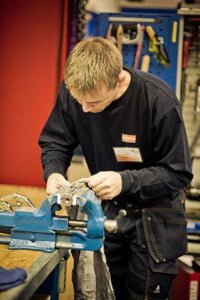 Assuming the only things you’ve been opening in the last year are cans of ravioli, let’s start off with the basics of mechanical skills that can be applied to any project. Before you start working on something, figure out what tools you’ll probably need, get everything ready within arms reach, and then take a good hard look at whatever it is you’re going to take apart. How is it held together? Where are all the seams, screws, nuts, and bolts? What’s fragile? Get a good sense of how things are put together.
Assuming the only things you’ve been opening in the last year are cans of ravioli, let’s start off with the basics of mechanical skills that can be applied to any project. Before you start working on something, figure out what tools you’ll probably need, get everything ready within arms reach, and then take a good hard look at whatever it is you’re going to take apart. How is it held together? Where are all the seams, screws, nuts, and bolts? What’s fragile? Get a good sense of how things are put together.
Next, start disassembling and place things in an ordered fashion at your workspace, somewhere away from where you might accidentally knock parts into disarray. Personally, I put parts down left to right as I disassemble. When I’m ready to put things back again, everything’s right there and ready to be put back in reverse order. If you’re working on something with complicated internals, take notes on what goes where and how.
If you’re worried you might be worried you’ll mess up because it’s all new to you, think of your assembled airsoft gun before you as a strangely shaped, completed puzzle. All the pieces are there. As long as you don’t lose any or break anything when you’re working, which won’t ever happen if you take it slow and steady (just watch out for tiny flying springs!), you will manage to get things back together again.
Also, keep in mind that the internet is a wealth of information. Airsoft Technicians generally love airsoft, and even though they also love money, almost all of them are happy to give you advice if you send them a message asking what might be wrong with your gun and how to rectify that. Various other communities like /r/airsoft, facebook groups, and forums are also a great resource for information.
Maintaining Airsoft Gun Internals
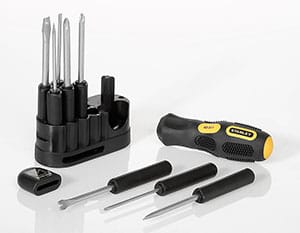 Goal: Prevent rust, ensure reliable operation, and increase the longevity of your gun
Goal: Prevent rust, ensure reliable operation, and increase the longevity of your gun- Tools required: small screwdriver set, barrel cleaning rod
- Supplies needed: scrap fabric swatches, pure silicon oil
As implied earlier, as the owner of a reasonably expensive hobby device that is used relatively infrequently, it’s important that it be peak condition at all times, especially if you only have one gun. You can baby your gun on the field all you want, but that doesn’t help the fact that your gun will get dirty inside, increasing wear and decreasing its lifespan. Additionally, inefficiency usually translates into lower accuracy and FPS, so even ignoring price tags, it’s usually in your best interest to take care of your gun! Swabbing the barrel every few games to clean out the dirt isn’t going to cut it if you want your gun to work well for a long time.
Quality aside, almost all airsoft guns are mass produced and fairly cheaply made, which means that even when it’s straight from the factory, that gun is filthy inside! For an AEG, consider fully disassembling your gun on a yearly or seasonal basis, cleaning and re-oiling all the metal or sliding internal parts (especially the gearbox). You might be surprised at how much dirt is in the gearbox, wearing out your gun’s gears and bearings. Meanwhile, applying a light film to everything that moves keeps things lubricated and smooth (which might make for a higher FPS thanks to reduced friction) and a light film of oil on everything metal will keep rust at bay. For gas guns, you might want to fully disassemble your gun from time to time and wet all the seals with silicon oil to keep them from drying out and causing leaks.
Repairing Airsoft Guns
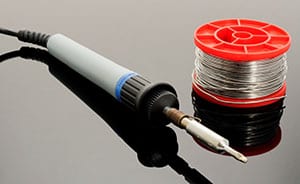 Goal: Something’s genuinely broken. Make it unbroken.
Goal: Something’s genuinely broken. Make it unbroken.- Tools required: Small screwdriver set, needle nose pliers, superglue, possibly a soldering iron
- Supplies needed: Replacement parts; solder and electrical tape for electrical issues; duct tape, fiberfix, or superglue for most breakages; trimmed or shaped reinforcing wood/plastic/metal for severe breaks.
Inevitably, all airsoft guns will break. Wires snap, seals dry out from stress and lack of oiling, circuit boards burn out from electrical arcs or overheating, and gun bodies get broken because you faceplant into your rifle after tripping over a rock. Heck, even batteries catch fire sometimes. Regardless, repairs are a widely varied and diverse animal. I can’t tell you everything that might happen to your gun, but I can say that most repairs are either adjusting internal parts, which can be done with basic tools, re-attaching broken battery wires, or fixing broken plastic/metal bits on a gun. A little sandpaper and superglue will bring any plastic pieces back together, but if you seriously smash up your rifle and break it open, you’ll probably need fiberfix or duct tape to make it whole again. That said, it’s pretty rare to break open a rifle without destroying internal components that then need replacement parts.
Upgrading Airsoft Guns
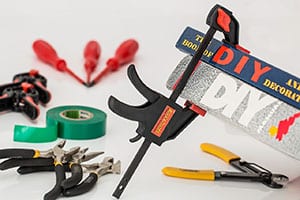 Goal: Replace perfectly good parts with better ones.
Goal: Replace perfectly good parts with better ones.- Tools required: Small screwdriver set, pliers, and possibly even clamps; Pipe cutting tools for custom barrel lengths, Sugru for custom hop-up patches. Tape and wedging material for shimming. Depending on how crazy an upgrade you’re planning, the sky’s the limit for necessary tools.
- Supplies needed: It’s your upgrade – figure it out!
Of course, it’s not simply enough to just buy an airsoft gun. There are always ways to make your airsoft gun better. As said before, airsoft guns are mass-made in factories. The parts of your gun are not perfect. Every gun has a whole slew of upgrade options, which largely depend on how much work you’re willing to put in. You can do whatever you dream of to your airsoft gun, but most people just stick to tightbore barrel upgrades and shimming internal parts. By shimming moving parts in your airsoft gun, you’ll reduce inaccuracies that stem from recoil or movement of the gun’s internal components when firing.
Airsoft Tech Final Thoughts
Self-sufficiency skills when it comes to anything you have, whether it’s maintaining and upgrading airsoft guns, your own home, or your own car, are incredibly useful and worth to developing. Not only will you have the joy and pride of doing things with your own two hands, you’ll be saving a good amount of money along the way that can be better spent on buying more airsoft stuff! If you get really skilled at fixing and upgrading airsoft guns and have fun doing it, you might even be able to pick up airsoft technician work as a well-paid side business. After all, it’s not like there’s an accredited course people take to become airsoft technicians. They were all once like you – just a curious guy or girl who wanted to dig into an airsoft gun. Thank you for visiting iamairsoft.com! For great products and more information about the game, check out our Airsoft Buyers Guides and Airsoft U!
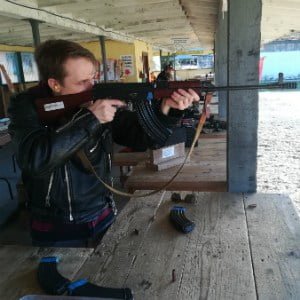
C.S. Wilhelm has is a 28 year old ex-military guy who’s been playing airsoft regularly for over a year in the forests of west coast Canada. Less interestingly, he’s also a tremendous nerd. C.S. Wilhelm has a degree in both Creative Writing and English, is a former editor of Portal magazine, and is currently an IT student.

